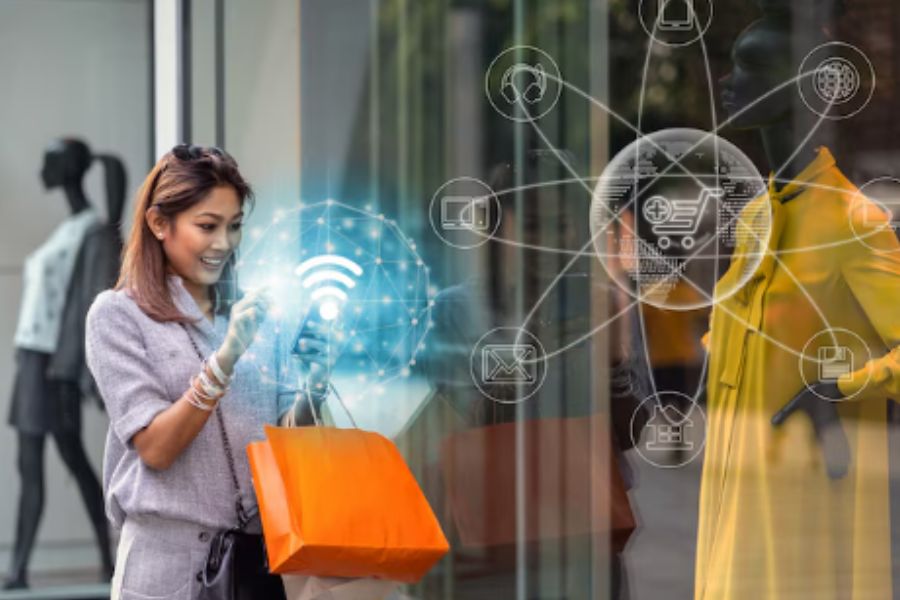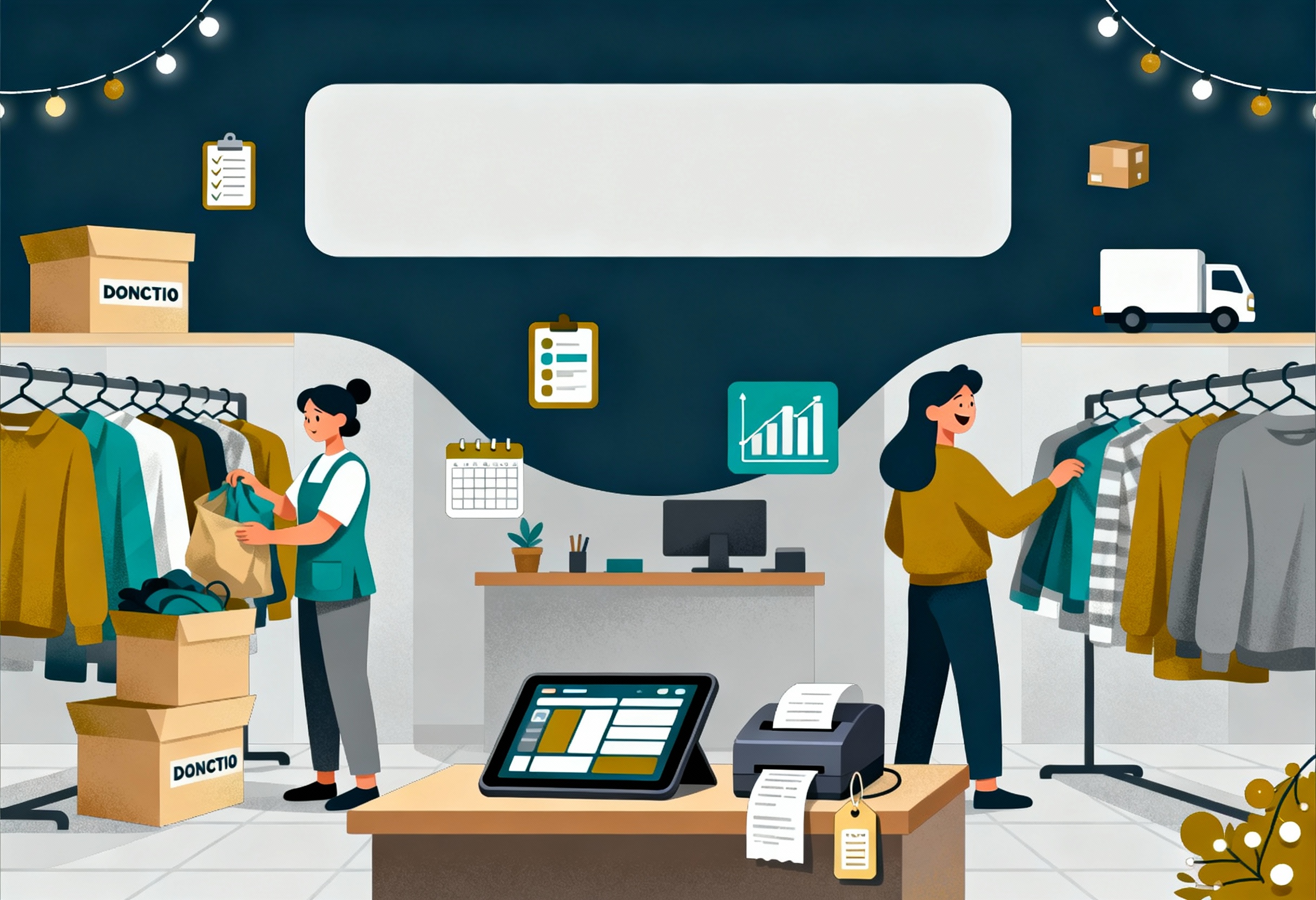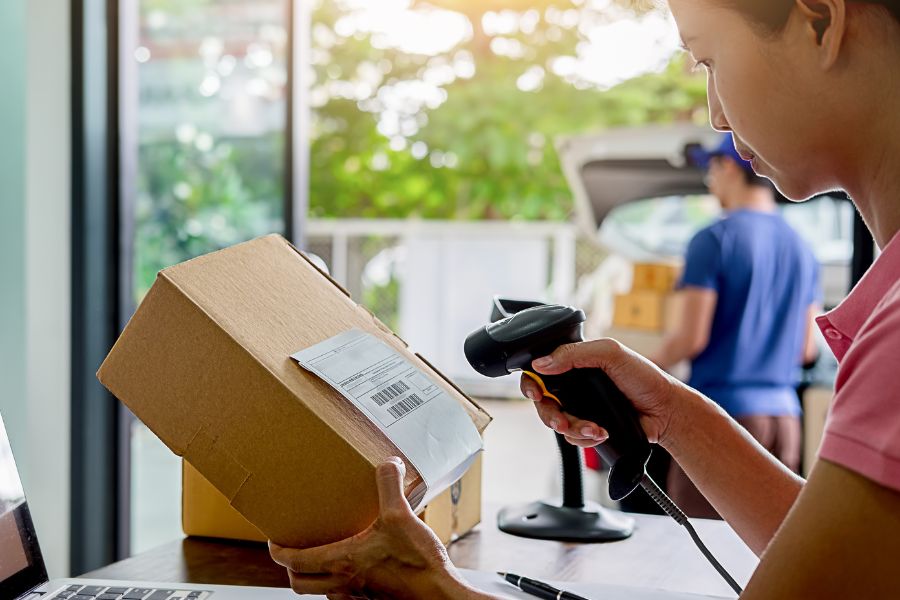Retailers face challenges in connecting physical and digital shopping experiences. An omnichannel retail solution integrates these touchpoints, creating seamless customer journeys across platforms. These systems help businesses track inventory, personalize marketing, and analyze customer behavior across all channels. Understanding the core elements of omnichannel retail drives competitive advantage in a market where shoppers expect convenience and consistency. This guide explores eight fundamental concepts that retailers must grasp to implement effective omnichannel strategies and transform their operations.
Highlights:
- Omnichannel retail creates a seamless shopping experience by synchronizing customer data, inventory, and engagement across all physical and digital channels.
- Building an effective omnichannel strategy requires unified data management, flexible fulfillment options, and personalized customer interactions at every touchpoint.
How Omnichannel Retail Works
Omnichannel retail connects shopping platforms into a unified system that supports seamless customer interactions across physical stores, mobile apps, and websites.
This approach creates either consistent inventory, pricing, and promotions across all platforms or adapts customer interactions based on specific channel behaviors. Building an omnichannel retail solution requires a deep understanding of customer habits and the deployment of technology capable of tracking unified data across multiple touchpoints. Companies need a cross-functional team to coordinate channel activities and maintain operational consistency.
Flexibility remains a core requirement. As customer preferences shift, businesses adjust their strategies to match evolving expectations. Many retailers now update traditional performance metrics to track omnichannel success more accurately, using ongoing testing and adaptation to refine their approach.
Why Omnichannel Retail is Important
Omnichannel retail strengthens business performance across customer engagement, sales growth, brand loyalty, and operational efficiency.
- Customer understanding improves dramatically as companies track shopper behavior across all touchpoints. This comprehensive data creates detailed customer profiles that reveal preferences, patterns, and pain points. Marketing teams use these insights to craft targeted campaigns, while service representatives deliver more personalized assistance.
- Sales growth follows naturally when customers enjoy simplified purchasing. A shopper who discovers products on Instagram can buy through their preferred channel, whether visiting a store, calling a representative, or clicking through to your website. This flexibility removes friction from the buying process.
- Brand loyalty strengthens through consistent experiences across all interaction points. Customers appreciate recognizable pricing, messaging, and service quality regardless of how they engage with your company. This reliability builds trust and encourages long-term relationships.
- Financial efficiency emerges as businesses consolidate inventory systems and sales platforms. Rather than managing separate systems for each channel, companies maintain unified operational frameworks. This centralized approach reduces redundancy, streamlines management, and ultimately lowers operational costs.
Omnichannel Retail Examples from Leading Brands
Leading brands provide clear examples of omnichannel strategies that connect digital and physical experiences effectively.
- Starbucks
Starbucks transformed its business after facing challenges with digitally disconnected customers. Their omnichannel retail solution now integrates mobile applications and email marketing to enhance physical store performance. Digital channels deliver personalized coupons, promotions, and event notifications that drive foot traffic and in-store purchases.
- Rossmann
Rossmann is a major European drugstore chain that embraces comprehensive technological integration. Customers enjoy multiple purchasing options including online ordering with home delivery or store pickup, traditional in-store shopping with loyalty program benefits, and in-app purchasing capabilities while browsing physical locations. The company continues expanding convenience features through smart parcel lockers, virtual shopping assistance, and innovative smart cart technology.
- LPP
This expansive Polish clothing retailer operates across numerous international markets with seamless channel integration. Customers move effortlessly between physical stores, mobile applications, and website platforms during their shopping journey. The company maintains unified customer profiles by offering unique scannable codes that shoppers can present in physical locations, enabling consistent shopping history tracking and personalized offer delivery.
- Nike
Nike integrates physical stores, mobile apps, and its website through a connected membership program. Customers access exclusive products online, reserve items for in-store pickup, and unlock personalized offers by scanning QR codes during store visits. The Nike app also enhances in-store experiences by providing product information, availability, and easy checkout options.
►►► Optimal solution set for businesses: Multi store POS, Next-gen POS, Inventory Management Software (MSI), Self Service, Automation, Backorders
- Sephora
Sephora bridges online and offline shopping by linking digital profiles with in-store experiences. Customers use the mobile app to book appointments, check product availability, and access tailored recommendations. In-store beauty advisors access customer profiles to suggest personalized products, while loyalty points and purchase histories sync automatically across all channels.
Multichannel vs Omnichannel Retailing
Choosing between multichannel and omnichannel retail approaches shapes how customers experience your brand.
Multichannel Approach
Multichannel retail provides multiple platforms for customers to engage with a brand, such as websites, mobile apps, and email campaigns. However, these platforms typically operate independently without sharing data or processes. This separation often leads to disjointed shopping experiences. For instance, when a customer adds products to their cart through a mobile app but later visits the website, their cart remains empty, forcing them to restart the process. Over time, these fragmented experiences can frustrate customers and drive them to competitors offering a more connected journey.
Omnichannel Approach
Omnichannel retail, in contrast, connects all customer-facing platforms into a synchronized ecosystem. It allows shoppers to transition effortlessly between channels while maintaining context. A customer might add items to their cart on a mobile app, receive an email reminder about their selections, and complete the checkout later on a desktop website, without losing any progress.
The real advantage of omnichannel retail is unified data management. Customer profiles, purchase histories, inventory information, and promotional campaigns stay consistent across all touchpoints. This consistency strengthens customer loyalty, improves operational visibility, and enables brands to deliver highly personalized experiences based on real-time data.
Common Myths About Omnichannel Retail Solutions
Several myths about omnichannel retail still circulate, potentially discouraging businesses from adopting this powerful strategy.
1. Omnichannel demands identical product offerings across all channels.
In reality, omnichannel focuses on unifying the customer journey, not replicating every item on every platform. Brands still tailor products or promotions based on the strengths of each channel while maintaining a connected experience.
2. Omnichannel requires excessive resource investment.
While setting up an omnichannel system involves some costs, businesses can start with scalable solutions. Structured rollouts, phased integrations, and cloud-based platforms make omnichannel accessible without overwhelming budgets.
3. Omnichannel strategies only suit large corporations.
Small and mid-sized businesses can successfully implement omnichannel retail by focusing on high-impact channels and using flexible tools that match their operational capacity.
4. Omnichannel systems are too complex for most businesses.
Although integration requires planning, modern platforms simplify deployment. Training teams, selecting compatible technologies, and focusing on gradual improvements make omnichannel retail manageable even for businesses without deep technical expertise.
5. Omnichannel is a passing retail trend.
Integrated shopping experiences continue gaining momentum. Customer expectations for seamless transitions between online and offline interactions show that omnichannel strategies are becoming a standard, not a temporary phenomenon.
6. Omnichannel only benefits eCommerce-heavy industries.
Brick-and-mortar retailers also gain significant advantages by connecting physical stores with digital touchpoints, offering services such as click-and-collect, endless aisle ordering, and personalized in-store experiences.
Key Omnichannel Challenges and How to Overcome
Building and sustaining an effective omnichannel strategy brings unique challenges that businesses must actively address to unlock full potential.
Technology integration
Retailers often struggle to connect legacy systems with modern digital platforms. Integrating point-of-sale systems, eCommerce sites, POS CRM tools, and marketing automation platforms demands careful planning. Choosing technology suites that prioritize open APIs and modular architecture makes integration faster and more flexible.
Data management and privacy
Collecting data from multiple interaction points raises privacy and compliance risks. Businesses must apply transparent data collection policies, gain proper customer consent, and protect data with strong encryption and access controls. Investing in centralized customer data platforms (CDPs) also helps maintain data accuracy and simplifies GDPR and CCPA compliance.
Inventory synchronization
Maintaining accurate inventory visibility across stores, warehouses, and digital platforms remains a major hurdle. Centralized inventory management systems, real-time stock updates, and demand forecasting tools minimize stockouts and overpromising during peak periods.
Staff training and adoption
Technology alone does not create great customer experiences. Employees must understand how to access customer profiles, recommend products based on interaction history, and manage cross-channel orders confidently. Ongoing training programs and clear operational guidelines empower staff to create consistent experiences across all touchpoints.
Customer journey mapping
Misaligned messaging or inconsistent service often stems from poor understanding of customer journeys. Retailers should map typical customer paths across channels, identify friction points, and align teams across marketing, sales, and support roles to deliver a coherent experience.
Best Omnichannel Strategies for Retail
Executing an effective omnichannel retail strategy requires more than maintaining presence across platforms; it demands a unified and customer-centered approach.
- Prioritize high-impact channels
Start by analyzing customer behavior to identify where your audience interacts most often, whether social media, mobile apps, email, or physical stores. Concentrate investment and marketing efforts on these platforms instead of spreading resources too thin across every possible outlet. Focused channel strategies build deeper engagement and higher conversion rates.
- Build a unified data infrastructure
Disconnected systems create gaps that customers notice. Retailers need centralized data platforms that synchronize inventory records, customer profiles, order status, and marketing campaigns across all touchpoints. Real-time data sharing enables customers to experience the same product availability, pricing, and promotions no matter where they engage.
- Personalize every interaction
Customers expect brands to recognize their preferences and shopping history. Use CRM insights, purchase history, browsing patterns, and loyalty program data to create tailored product recommendations, targeted promotions, and individualized content across all channels. Personalization goes beyond using a customer’s name—it means delivering meaningful, relevant experiences at every step.
- Continuously research and adapt to customer preferences
Customer behaviors shift rapidly as new technologies and trends emerge. Regularly conduct customer surveys, social media sentiment analysis, and purchase behavior studies to keep your strategy aligned with evolving expectations. Journey mapping exercises also reveal friction points and hidden opportunities for improvement.
- Make every touchpoint transactional
Every digital and physical touchpoint should enable immediate purchasing. Whether a customer is browsing an Instagram ad, checking product details in an app, or visiting a store, the path to purchase must be intuitive, fast, and flexible. Features like one-click checkout, digital wallets, and mobile point-of-sale systems simplify the buying process.
- Bridge online and offline experiences
Customers expect to move effortlessly between browsing online and shopping in-store. Implement services such as buy online pick up in store (BOPIS), reserve online pay in store (ROPIS), and in-store mobile checkout to eliminate barriers between channels. Unified loyalty programs that reward engagement across all touchpoints also encourage cross-channel behavior.
- Expand fulfillment flexibility
Customers increasingly value convenience over channel loyalty. Expand fulfillment options to include curbside pickup, same-day delivery, ship-from-store capabilities, and easy cross-channel returns. Flexible fulfillment strategies not only improve customer satisfaction but also optimize inventory utilization across the network.
- Strengthen internal collaboration
Omnichannel success depends on alignment across departments. Marketing, IT, sales, and customer service teams must collaborate around shared goals, synchronized performance metrics, and integrated customer engagement strategies.
Omnichannel Retail Trends
Omnichannel retail continues evolving as technology advances and customer habits shift. Monitoring emerging trends helps businesses stay ahead.
- Transforming Physical Stores into Showrooms
Retailers increasingly use stores to showcase products that customers can later purchase online. This model reduces inventory costs, supports faster product launches, and satisfies customers who prefer to see products physically before buying.
- Expanding through marketplace partnerships
Partnering with established marketplaces expands brand reach dramatically, connecting businesses with thousands of potential customers who prefer consolidated shopping experiences on trusted e-commerce platforms.
- Investing in automation and AI
Major retailers increasingly invest in technologies that automate pricing strategies, assortment selections, and product recommendation systems. AI and automation also optimize supply chain operations, enhance personalization capabilities, and streamline inventory management across multiple channels.
- Cross-border eCommerce expansion
The once-common “we don’t ship abroad” stance has largely disappeared. Advanced payment processing technologies and improved logistics solutions enable more companies to confidently establish sales channels in international markets.
- Implementing omnichannel POS systems
Modern point-of-sale systems now function as comprehensive retail hubs, connecting in-store and online operations. These platforms synchronize inventory across all channels, maintain unified customer profiles, and process transactions consistently regardless of purchase location. Advanced omnichannel POS solutions provide retailers with integrated analytics, enabling data-driven decisions across their entire business ecosystem while delivering seamless customer experiences at every touchpoint.
ConnectPOS – A Leading Name for Omnichannel Retail Solution
ConnectPOS is recognised as a comprehensive omnichannel solution, delivering seamless integration between online and offline operations for modern retailers. Its capabilities directly address the key demands of true omnichannel retail.
Key strengths of ConnectPOS include:
Centralized Customer Profiles
All customer data, including purchase history, loyalty points, and preferences, is unified and accessible across every store location and channel. Staff can personalize interactions instantly based on complete customer insights.
Real-Time Inventory Synchronization
Inventory levels update automatically across physical stores, online shops, and warehouses. Customers receive accurate stock information, supporting services like BOPIS, endless aisle ordering, and multi-location pickups.
Flexible Payment Options
ConnectPOS supports diverse payment methods such as contactless payments, split payments, and mobile wallets, adapting to customer preferences during checkout without friction.
Cross-Store Fulfillment Capabilities
Customers gain flexibility to purchase products at one location and pick them up at another. Inventory sharing between stores optimizes product availability and reduces missed sales opportunities.
Integrated Analytics and Reporting
Built-in dashboards provide real-time visibility into sales trends, customer behavior, stock performance, and marketing effectiveness, helping businesses make faster, data-driven decisions.
Omnichannel Loyalty Programs
Loyalty points and rewards apply across all channels, encouraging customers to engage both online and offline while maintaining a consistent brand experience.
Easy Platform Integration
ConnectPOS integrates with leading eCommerce POS platforms like Shopify, Magento, and BigCommerce, streamlining the connection between digital storefronts and physical retail locations.
User-Friendly Interface for Staff
Frontline employees access a clear, intuitive interface that simplifies operations, speeds up transactions, and empowers staff to deliver better customer service.
ConnectPOS combines all the necessary components for building a scalable, customer-centered omnichannel retail strategy, making it a strong choice for businesses seeking to modernize their operations and deliver seamless experiences across every touchpoint.
Final Thoughts
Omnichannel retail solutions have reshaped how businesses connect with customers and streamline operations. Retailers who embrace this technology gain a competitive edge through seamless customer experiences, unified data management, and efficient inventory control. Implementing the right omnichannel strategy helps retailers meet modern consumer expectations for convenience and personalization.
Ready to transform your omnichannel retail business? Let’s take the first step toward retail excellence with ConnectPOS. Contact our omnichannel POS experts to transform your business operations and create seamless shopping experiences for your customers.
FAQs: Omnichannel Retail Solution
- What is the main difference between multichannel and omnichannel retailing?
Multichannel retailing provides customers with multiple ways to interact with a brand, such as websites, mobile apps, and physical stores, but these channels often operate independently. Omnichannel retailing, on the other hand, connects all platforms into a unified system where customer data, inventory information, and shopping experiences are synchronized. This integration allows customers to move across channels without losing context, creating a seamless and consistent journey.
- Is omnichannel retail only suitable for large businesses with big budgets?
No, businesses of all sizes can adopt omnichannel retail strategies. While large enterprises may have more resources, small and mid-sized businesses can still implement scalable omnichannel solutions by focusing on the most impactful channels, using flexible technology platforms, and aligning operations around customer needs. Starting small and expanding over time often leads to stronger, more sustainable omnichannel growth.
- How does ConnectPOS support a complete omnichannel retail strategy?
ConnectPOS acts as a centralized platform that connects online and offline retail operations. It synchronizes customer profiles, inventory levels, and sales data across all locations and channels. Features like real-time inventory tracking, flexible payment options, cross-store fulfillment, and omnichannel loyalty programs enable businesses to deliver seamless, personalized shopping experiences. Integrated analytics also empower retailers to make data-driven decisions that strengthen customer engagement and operational efficiency.
►►► Optimal solution set for businesses: Shopify POS, Magento POS, BigCommerce POS, WooCommerce POS, NetSuite POS, E-Commerce POS



